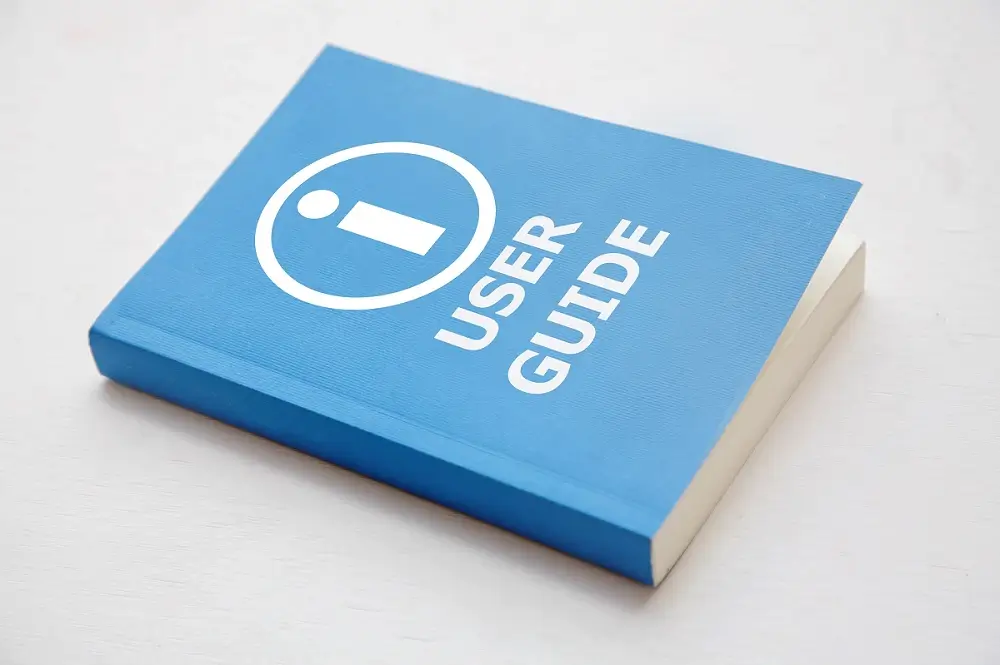
This summary packs the essentials from the full handbook, Brand communications handbook: Turning user guides into marketing gold. User guides are an untapped marketing goldmine, sidelined by outdated information and a hyper-focus on product development. With the right investment, they can evolve from overlooked documents to powerful client-facing assets that fuel success.
It’s time to flip the script: turning user manuals into powerful marketing copy is essential for tech firms that want to amp up customer engagement and boost conversions. By tapping into these engagement engines, brands can cut through the noise and make their mark in an oversaturated market.
In today’s fast-changing world, information onslaught often bounces off people’s short focus spans. As a reader, you probably feel overwhelmed with a constant influx of data bombarding you daily, causing you to feel bored and fatigued.
For tech firms, this pattern presents a challenge in their quest to drive meaningful engagement with their customers. The pursuit of converting prospects into loyal customers is laborious on its own, but it it’s even more daunting considering that many organizations don’t leverage all the content available at their disposal.
This is especially true of user guides, which usually aren’t treated as valuable assets but as mere afterthoughts.
Instead of bringing instruction manuals into the spotlight as the knowledge vaults that they are, these documents seem destined for neglect, like moth-eaten coats hanging in the attic.
User guides are the company’s forgotten treasure maps
Why do user manuals remain shadows in the background when they could be transformed into client-facing assets that drive marketing success?
The answer is multilayered. User guides are sidelined due to several factors – mismanagement, inconsistent standards, inadequate feedback and a lack of recognition in their significance, to name a few. Workforce churn and aversion to change hinder documentation efforts further. Moreover, developers often view guide maintenance as monotonous, which doesn’t help matters either.
The most significant factor in many tech firms, however, is their hyper focus on product development at the detriment of documents. As a result, software documentation is packed with outdated, inaccurate information, resulting in underinvestment and untapped potential.
Unearthing brand communications potential from instruction manuals
Tech firms and their marketing teams need to shift their perspective on user guides. Rather than think about them as instruments that prioritize clarity and precision over creative flair, they should treat them as an extension of their brand and a tool for engaging customers.
Instruction manuals can be effectively repurposed to drive conversations by adding user-centric language and compelling storytelling techniques, while emphasizing customer benefits.
The following documents offer a fantastic chance to showcase:
- Key attributes and capabilities
- Use cases specific to your industry
- Case studies
- Solution-oriented content
- Thought leadership
- Tailored marketing
- Visual walkthroughs
- Compatibility and integration
Repurposing user documentation into brand communications assets
To maximize the value of user documentation, tech firms need to restructure their internal operations by integrating software documentation workflows into their development cycles. This involves setting clear standards, highlighting collaboration and adjusting their marketing budgets. Aside from user guides, tech firms can repurpose various internal documents that provide guidance to users, employees or customers on product use, services or systems. These may encompass:
- Tutorials and how-to guides.
- API Documentation.
- Technical reports.
- Release notes and updates.
- Knowledge bases and community forums.
- Video guides and webinars.
Tech firms leading the way: User manuals conversion case studies
If you think that the guidelines outlined in this handbook summary seem intriguing but potentially too ambitious, don’t lose heart. I wrote the handbook Brand communications handbook: Turn user guides into marketing copy to underscore the untapped potential of instruction manuals in the marketing landscape for countless tech firms. I’m not painting an overly optimistic picture; rather, I aim to shed light on the practicality and success of this approach.
Numerous progressive companies recognize the inherent worth of user manuals and they have effectively repurposed them into marketing copy that drive engagement growth and profitability. Salesforce, MailChimp, HubSpot and Shopify are just a few examples.
Why tech firms struggle to turn user guides into marketing gold
Too many companies grapple with disorganized procedures and poorly aligned strategies between technical and marketing teams. If developers are informally assigned with repurposing user guides in joined effort with the writers, it can lead to role confusion and inefficiencies. It can also contribute to existing disorganization and cause friction in relationships. Does this ring a bell?
This is actually a common issue in tech firms where developers and writers struggle to bring technical and marketing objectives into alignment. As a result, many tech firms miss out on leveraging user guide effectively, strengthening their brand and boosting revenue through effective marketing.
Establishing user documentation procedures: Overcoming obstacles
Changing internal processes can be a tough nut to crack. Employees, even those in leadership roles, often resist change out of habit and comfort with existing routine. Cultural barriers and resistance to change—nearly two-thirds of employees resist change—often hinder progress, particularly in departments where a culture of improvisation and informality prevails.
Although informal practices can work well for some short-term tasks, they lack the strategic foresight and institutional support to tackle larger issues and challenges, such as:
- Scalability
- Consistency
- Documentation in general
- Long-term strategy
- Risk management
- Resource allocation
How to obtain leadership approval for improving user guides
In a perfect scenario, all company leaders would naturally recognize the importance of meticulously planned documentation processes. Since this isn’t always a given, managers and directors often need convincing to recognize the potential in transforming user manuals into valuable marketing copy. Leaders are often focused on short-term goals, tight budgets but they also may be unaware of software documentation challenges plaguing their firm.
To convince them, consider drafting a proposal that:
- Aligns benefits with organizational objectives.
- Highlights how improved documentation processes boost efficiency, customer satisfaction and lead to better financial outcomes.
- Includes data and competitor case studies.
- Emphasizes success stories and metrics showing increased conversion rates.
- Displays the negative impact of disjointed content on productivity and brand.
Revamping software documentation: A change management guide
Supposing you’ve obtained approval to rework user guides into marketing copy, don’t forget to:
- Outline your conversion objectives.
- Choose segments for adaptation.
- Define roles and responsibilities for developer and content management teams.
- Set up a conversion schedule with specific milestones.
- Determine the target audience and preferred marketing avenues.
Bringing software documentation into the marketing fold
To ensure your internal documents become valuable marketing copy, it’s essential to consider your writers as valuable team members. This involves building credibility into the writing process, and these five proven methods can help you achieve it:
- Incorporate writers into meetings, increasing their visibility and offering a unique perspective to team leaders and developers.
- Schedule regular meetings between developers and writers to facilitate in-depth discussions, leading to accurate and user-friendly documentation.
- Create a distraction-free setting for interviews between developers and writers, ensuring clarity.
- Allow writers to use recording tools, enhancing accuracy and saving time.
- Monitor marketing copy performance by regularly assessing click-through rates and conversion ratios.
Unlocking user guides: 9 key takeaways
- User guides remain an underutilized opportunity in the realm of marketing, yet forward-thinking tech firms have leveraged their potential by turning them into powerful marketing copy.
- The malpractice of instruction manuals is the result of inconsistent standards, insufficient feedback, and an undue focus on development to the disadvantage of software documentation.
- Tech firms should consider documentation as a collaborator in their efforts to boost brand exposure and power customer engagement.
- API documentation, instruction manuals, how-to guides, release notes and webinars, among other documents, are an excellent source of information for demonstrating industry expertise.
- The principles of transforming user guides into marketing copy are attainable and realistic, although it may seem challenging on first glance.
- The lack of organization in tech firms often contributes to the disjointed teamwork between developers and writers, which makes it hard to turn user guides into valuable marketing collateral.
- For tech firms to achieve consistency, efficient resource allocation, scalability and alignment with long-term strategy, they must formalize their software documentation processes.
- Superiors frequently fall short of seeing the potential in user guides and have to be persuaded with an in-depth proposal backed by data and real-life examples.
- To maximize the potential of your internal documents, encourage bringing writers into a tighter company fold. This involves integrating them into meetings, setting up routine conferences with the developers and consistently evaluating the effectiveness of your marketing content.
Ready to transform your user guides into high-impact marketing copy? Dive deeper into the full handbook, Brand Communications Handbook: Turning user guides into marketing gold, and discover how you can unlock their hidden potential. Don’t miss out on valuable insights—subscribe to my newsletter for regular updates, tips and exclusive content that will empower your brand communications strategy.







